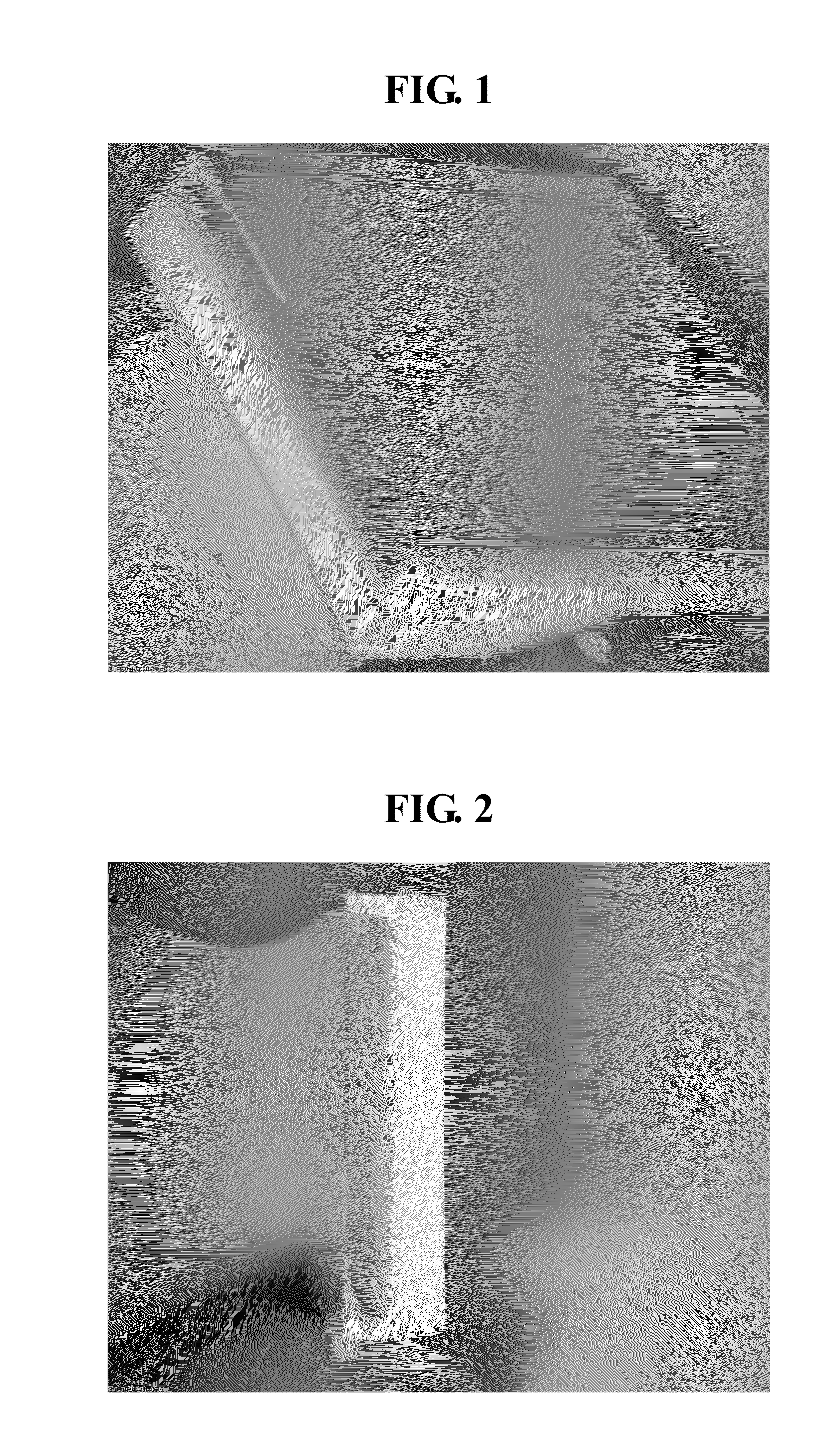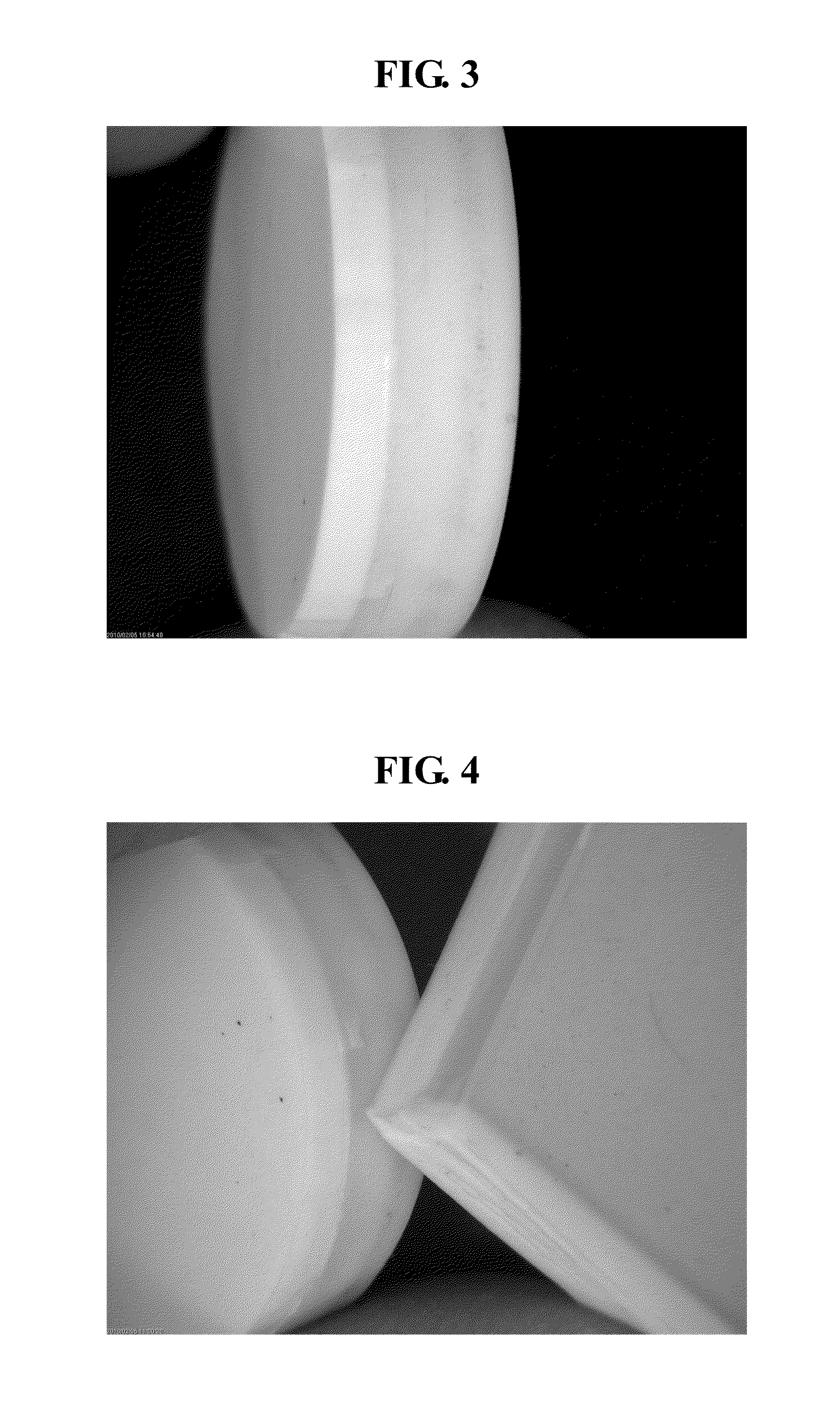Fluoroelastomer compositions having self-bonding characteristics and methods of making same
a technology of fluoroelastomer and composition, which is applied in the field of fluoroelastomer composition bonding, can solve the problems of not being typically sealed, not always easy to bond such fkm and ffkm materials to surfaces, plasma and other gases, and the range of temperatures is not ideal for most bonding agents
- Summary
- Abstract
- Description
- Claims
- Application Information
AI Technical Summary
Benefits of technology
Problems solved by technology
Method used
Image
Examples
example 1
[0090]In this example various commercial perfluoropolymers were cured and bonded using existing bonding agents used in the art to a surface and tested as control samples A (using DP-1520 a formulation based on a commercial bonding agent), and B and C (each using TruBond® 101 bonding agents). A further control D was prepared by simply direct molding a standard FFKM to a surface without a bonding agent. Control sample E was prepared using a prior art self-bonding composition noted in the background herein (including SR633® from Sartomer which includes a heavy metal component) that was bonded and molded in situ to a surface. The same perfluoropolymers were made into compositions (Samples 1-5) including a bonding compound as described herein (Pro-4302 from Sartomer) which is aluminum acrylate, and bonded by direct molding to a surface and tested.
[0091]Compound controls A, B and C as well as the Experimental Samples 1-5 were formed using as the base polymer the peroxide-curable FFKM mate...
example 2
[0096]In this Example, an FKM available commercially as Tecnoflon® P959 from Solvay Solexis was used as a base curable fluoropolymer. Various additives were used in the formulations, including silica and nano-clay filler (Aerosil® R-972 and Nanomer 1.30 PS, respectively). Each of the formulations was peroxide curable using a peroxide curing agent (Luperox® 101) and a co-curing agent (Diak® #7) in accordance with the amounts set forth in Table 5. Control Samples with different filler systems were provided for comparison including the use of no bonding compound (Controls F, H, and I), a prior art bonding compound (Sartomer® SR633) (Control G). Controls F, H, and I were tested using an externally applied commercial bonding agent (TruBond 101). Control G was tested with no external bonding agent and with the TruBond 101 external bonding agent. The inventive examples 6 and 7 were tested both with and without an external bonding agent to show the effect of the composition on bonding force...
PUM
| Property | Measurement | Unit |
|---|---|---|
| temperatures | aaaaa | aaaaa |
| temperature | aaaaa | aaaaa |
| temperature | aaaaa | aaaaa |
Abstract
Description
Claims
Application Information
 Login to View More
Login to View More - R&D
- Intellectual Property
- Life Sciences
- Materials
- Tech Scout
- Unparalleled Data Quality
- Higher Quality Content
- 60% Fewer Hallucinations
Browse by: Latest US Patents, China's latest patents, Technical Efficacy Thesaurus, Application Domain, Technology Topic, Popular Technical Reports.
© 2025 PatSnap. All rights reserved.Legal|Privacy policy|Modern Slavery Act Transparency Statement|Sitemap|About US| Contact US: help@patsnap.com



